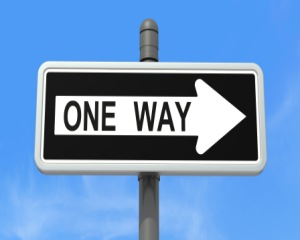Online Travel Agencies (OTAs) and booking channels such as Booking.com, Webjet and Wotif.com have been a boon for the hospitality industry, providing a proven conduit for filling up rooms that would have otherwise stayed empty. This value has its drawbacks, however, as more customers move exclusively to booking through these channels.
This has created a situation where hotels need to devise strategies for competing with the same sites that bring them business. This difficult task becomes an even bigger obstacle when you consider most OTA agreements require rate parity – or not advertising rates for less than what is on the OTA. But savvy hotel operators have found a few workarounds. Here are three strategies hotel operators can use for enticing travelers back to booking direct.
Offer Add-Ons and Packages with Attractive Values
Rate parity conditions in OTA agreements only apply to publicly-posted rates for the exact rooms you advertise on their sites. Even if you can't charge less on your website for the same room, you can offer value that exceeds their savings.
This can be done by packaging the room with other add-ons, such as free parking, Wi-Fi or tickets to a local event. Let's say for example, the OTA advertises your room for 40% off the normal rate of $100. That's a saving of $40. You could offer that room at the normal $100 rate, but you could throw in two tickets to the local theatre valued at $50.
As an example, one hotel in Walnut Creek, USA implemented this strategy, offering tickets to a local Art & Wine festival to customers that booked direct. They saw a 6 percent year-over-year increase in total visits to its website and a 23 percent year-over-year increase in reservations on the website.
Off Discounts Equal to (or More) Than the OTA to a Limited Audience
Rate parity limitations only apply to rates that you advertise publicly, or that anyone on the Internet can see. You can still offer deals to a limited audience.
This can include your Facebook or Twitter following, people who signed up for your email list, or even people who call you over the phone. One hotel ran a Facebook-only offer that advertised a promotion code for discounted rates through winter. The hotel received nearly $2,000 in revenue directly from Facebook during the month of the promotion.
In another example, a hotel offered returning guests the chance to earn a $25 gift card if they booked direct. The hotel sent an email campaign to past guests and afterwards experienced a 10 percent year-over-year increase in reservations on the site during the three months of the promotion.
Keep Them on Your Website with Smart Design
Many times when customers are shopping on OTAs, they visit the hotel's website to learn more about their accommodations. This is a great opportunity to capture those site visitors and prevent them from going back to the OTA. This takes smart web design.
The first rule is pretty simple. Make it as clear and hassle-free as possible to book. Provide “book now” buttons on every page that link to a trusted online hotel booking automation system. These buttons should be near the top of the page (so it doesn't require scrolling). Also, include call-to-actions on every page that invite customers to “sign up for our email list for discounts,” or “Fan on us on Facebook for special offers.”
Also, many customers assume when they book on OTAs, they will get the “less desirable rooms.” So you need to show them what your best rooms look like immediately. This could convince them it's worth caving on the amount they would have saved on the OTA. Make sure that your most attractive rooms, views and balconies (if you have them) are front and center (like on your homepage). These images need to be professionally taken and show all of the perks of your most attractive rooms – spa baths, incredible views, large balconies and windows and so on.
By implementing the tips we’ve laid out in this article, savvy hotels can both reap the clear benefits of using OTAs and drive customers to their own website while remaining in compliance with OTA parity agreements. Rather than a battle, it can be a win for everyone involved.
Guest Blogger – Ashley Verrill from Software Advice
Ashley Verrill is an analyst with American based company, Software Advice. She has spent the last six years reporting and writing business news and strategy features. Her work has been featured or cited in Inc., Forbes, Business Insider, GigaOM, CIO.com, Yahoo News, the Upstart Business Journal, the Austin Business Journal and the North Bay Business Journal, among others. She also produces original research-based reports and video content with industry experts and thought leaders.
Alan S. Horowitz contributed to this report.
Related blog posts:
– Creative Email Deals that Get Results for Hotels
– Achieving Greater Email Marketing
– Being Creative with Your Specials

